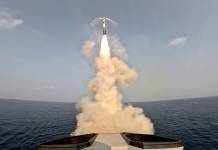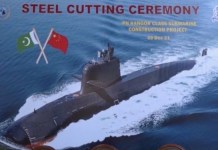Speaking at the closing ceremony of ‘Desert Knight 21’ joint Indo-French exercises, the Indian Air Force Chief ACM RKS Bhadauria shed some light on the service’s ambitions for India’s 5th-generation fighter programme.
The IAF’s AMCA Project, being progressed by the Aeronautical Development Agency (ADA, the aerial research division of DRDO), is expected to be a twin-engine multirole stealth fighter aircraft, with the first flight within the next five years.
According to the Air Force chief, the fighter jet would incorporate the latest technologies within the airframe, making it an advanced state-of-the-art fighter jet comparable to any such aircraft in its league worldwide.
Although being tight-lipped, Bhadauria told that the service is looking forward to the aircraft incorporating 6th-generation features, keeping in mind the future development of the aircraft and its usability with the IAF.
“Our present vision is to incorporate the latest technologies and sensors in our 5th-generation aircraft,” he said.
He also acknowledged that India had started the work later than most other countries, and thus it would be imperative to incorporate the higher generation technologies.
“We started the work on fifth-generation aircraft a little late. So technologies and sensors contemporary to that period of development would be added into fifth-generation fighters.”
The Indian aviation manufacturing industry, mainly monopolized by state-owned Hindustan Aeronautics Limited, has been coping hardly with the development and production of the Light Combat Aircraft Tejas Mk-1 and Mk-1A, and now focusing on the prototype and testing of the Tejas Mk-2 (an improvised single-engine 4th/4++ generation aircraft of the Mk-1A).
It is believed that the experience gained by the development of the Tejas project would enable the Indian designers to prep up for a bigger leap, into stealth technology.
The Air Force Chief also commended the successful completion of the joint Indo-French exercise, which, uniquely, saw the participation of both Indian and French Rafale fighter jets.
He said that when the IAF received the Rafale aircraft, the first priority was to operationalize it and integrate it with the existing combat fleet. The service has successfully achieved that in a short time, and the joint exercise which involved other fighter jets including Su-30MKI and Mirage-2000I, was a live example of integration and interoperability.
“We have some pilots training in France and some in India itself. We have enough pilots to have a right cockpit-pilot ratio,” he said, adding that complete induction would be completed by next year.
Interestingly, cooperation with France has also brought a much-needed boost for the AMCA project for its powerplant, as it is being said that the aircraft is likely to sport an indigenous Kaveri engine whose development would be aided by the French company SAFRAN.
Penned By Ayush Jain





